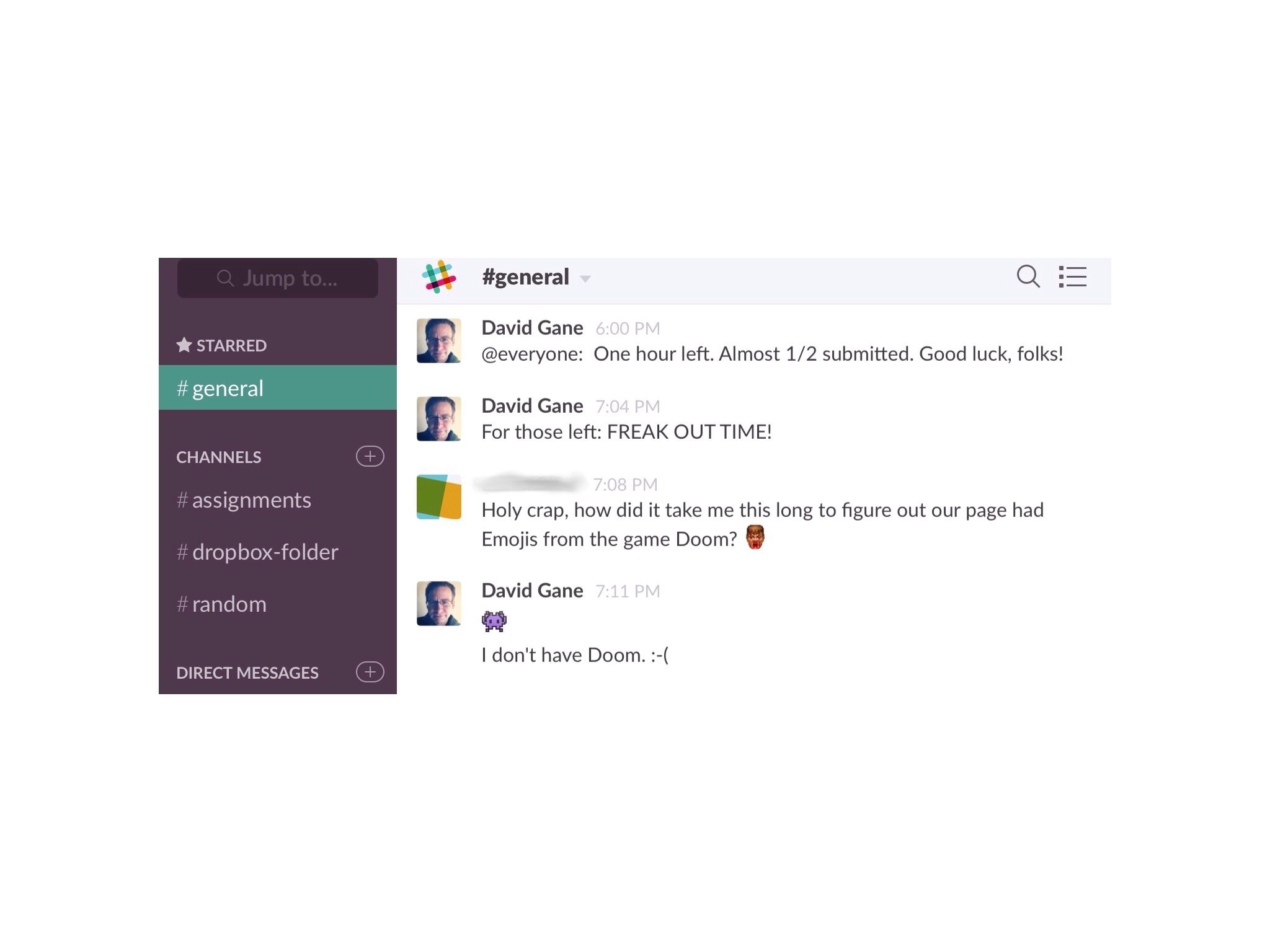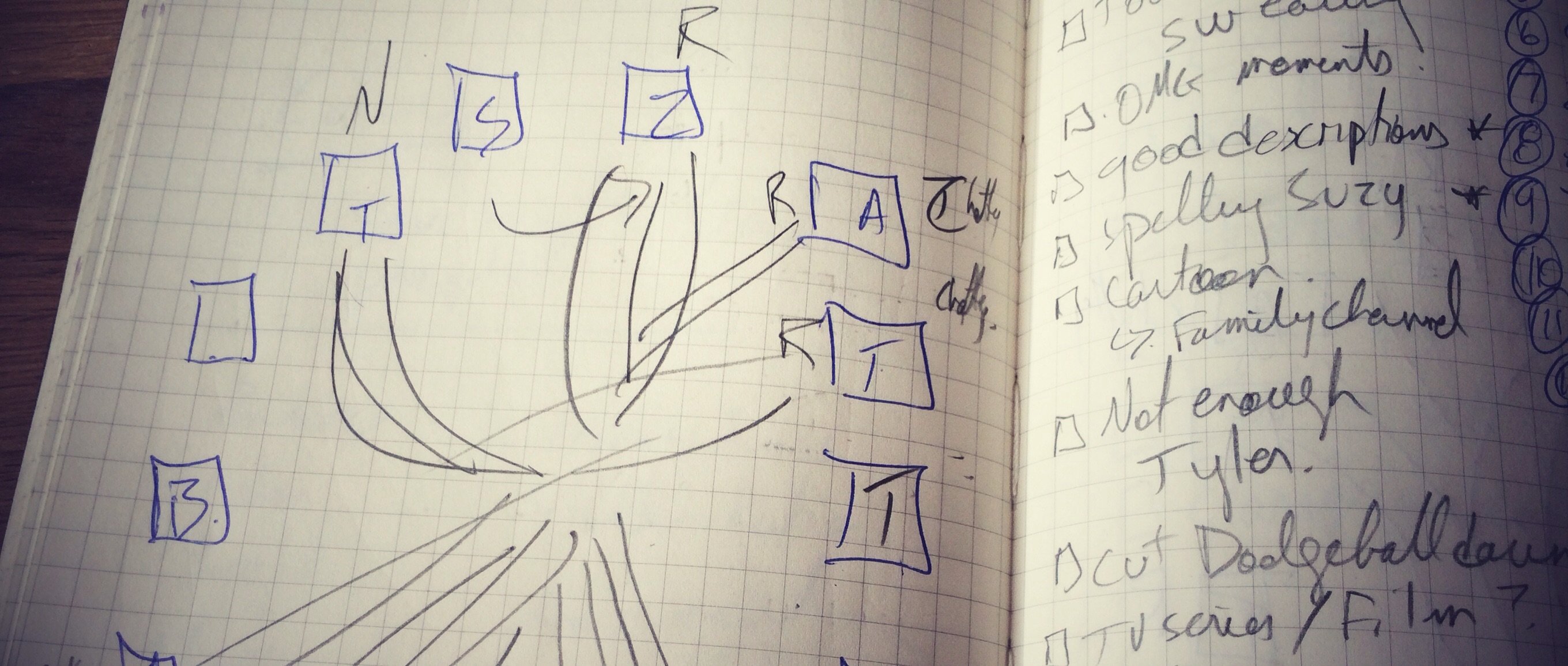
For the past few months, I’ve been teaching scriptwriting. This was my fifth time teaching the class at the university level, but also my eighth time since I began trying to help others work past the blocks they throw in front of themselves when wanting to write.
Each time I prepare for the class 1, I try to build it a little better, based on the feedback from my students and my own personal response to how the previous class went.
This last semester I tried a number of new ideas and I wanted to share a few of them with you.
Early on when I first started teaching, I was encouraged to use an open-source learning platform to communicate with my students. It is available online through the university website, and this thing is a beast. It is made to handle almost any request a professor or instructor from any discipline needs to throw at it. It has room for email, blog posts, calendars, uploads, surveys, IRC chat…the options are endless.
Yet, it is also very particular in its ways of operating. Although it was available as a web-enabled device, it didn’t always play well with my tablet and I couldn’t upload any files, except photos, to its server.2
Also, unless I logged in and checked in the right area, I never knew if my students were emailing one of my two accounts (yes, you read that right), messaging me, or trying to use the IRC. In our “always-on” notification world, I found I was often missing most of my communication.
So when this semester started, I knew I needed something simpler, a stripped-down form of communication that was also able to handle file uploads.
Everyone seemed to fall in love with Slack this year. An app built for team communication, its clean simple interface allows for centralized conversations that can be divided into specific topics (or channels). As well, it allows a person to upload almost any type of file or link from their Google Docs or Dropbox. It was also capable of one-on-one DMs and group messaging, so all levels of communication, from the public to the private, were available. Most important, it could be accessed easily from almost any device, computer, smartphone, whether it was Android, Apple or Windows (with notifications).

There were some bumps along the way. I didn’t want to force the students into another communication tool (I now know some students were being asked to use four different types), so I pitched it to them before proceeding. It also tries to be a closed system, so access to your group can only be through an email invitation, so when some students tried to set up their account without their invitations from me, they had trouble.
Overall, though, Slack was a success. We created four channels: /general/, which focused on class announcements, reminders, and open discussion; /assignment/, where all reading assignments were shared; a separate /Dropbox/ channel, which was reserved with a direct link to the class Dropbox that I set up where I stored PDFs of the syllabus, schedules, assignments, class notes, and the final scripts students wanted to share; and /random/, where students would put in announcements for events outside of class or share a video of their trip to the store.
The biggest advantage was that I could respond to questions immediately, set up notices when I was available for meetings, remind students that assignment were due, and respond with feedback to their work.
This was one of my favourite teaching tools and it was something my students never really saw.
Over the previous semesters, I was bumping up against issues of participation. Much of my class time is focused on discussions between the students about their individual writing. While I tried to track this exchange in the past, I often failed. I tried taking notes at the end of each class, but by the end I would forget to do it consistently, and often only remember only those who spoke the most, on a regular basis throughout class. Also, I often would take over the conversation, which didn’t allow the students to do their own critical thinking. Overall, I just felt I was failing on tracking the in-class interactions.
Then I discovered Spiderwebs, a tool developed by Alexis Wiggins that tracks these conversations on paper. Moreover, the more detailed you develop your notational system, the more feedback you can offer. For me, I kept it simple, tracking the conversation of each script. As well, since I was taking notes, I kept my mouth shut and let the students do most of the talking.

Once I was familiar with the tracking the conversation, the tool allowed me to be aware of other aspects of participation that I then shared with the students. When I prepared an example to show the class, I realized it wasn’t only about having a discussion, but also about realizing how other factors like listening, not interrupting or blocking another students words, staying focused on one conversation and remaining objective all had an impact. As well, it revealed who was asking the deeper questions or making keen observations, or when someone was prescribing answers or rewriting the work, which I could redirect them into considering weak points and making suggestions that instead would allow the student writer to find their own solution.
At the end of semester, I was able to review who spoke, how much, who didn’t speak, as well as having a list of notes about student’s feedback on each script, and what the individual concerns were of the student writers. Also, as an unintentional effect, I also tracked attendance in the class, with notes attached when I was notified of an absence, as well as why.3
Lastly, I brought Ang into the class to talk about the the day-to-day practice of writing, as well working with a partner.
The two of us have written eight projects together since 2008, including the novel we are working on at the moment, as well a few projects that we dumped at an early stage. Yet, because I suck at remembering stuff, the process of talking about our process was good to rehash our path and consider how we got to this point.
As well, we had to verbalize and discuss each step of this process, from idea, to structuring, to writing and rewriting. Over the years, we continue to refine this process, to the point that we feel it’s running like a machine.
Yet, none of this really meant anything to the students, because, hopefully, they already had their process. So Ang and I hashed out a few learning lessons that we brought to the students:
I wasn’t sure how bringing Ang into class registered with the students, but upon review, I got an enthusiastic thumbs up. I also, knew many of my students were in or considering writing partnerships of their own, so this offered them some guidelines to start with.
I used a lot of other stuff in the class, things that are either too unique or small to get into in this review, but I thought I’d close out by sharing a list of them:
This is a quick shout-out to all my classes, but especially to my students from this semester for allowing me try out so many new things.↩︎
To be honest, this has as much to do with the tablet as it has to do with the platform.↩︎
I never make attendance mandatory. My view is they’re young adults and should act like it.↩︎